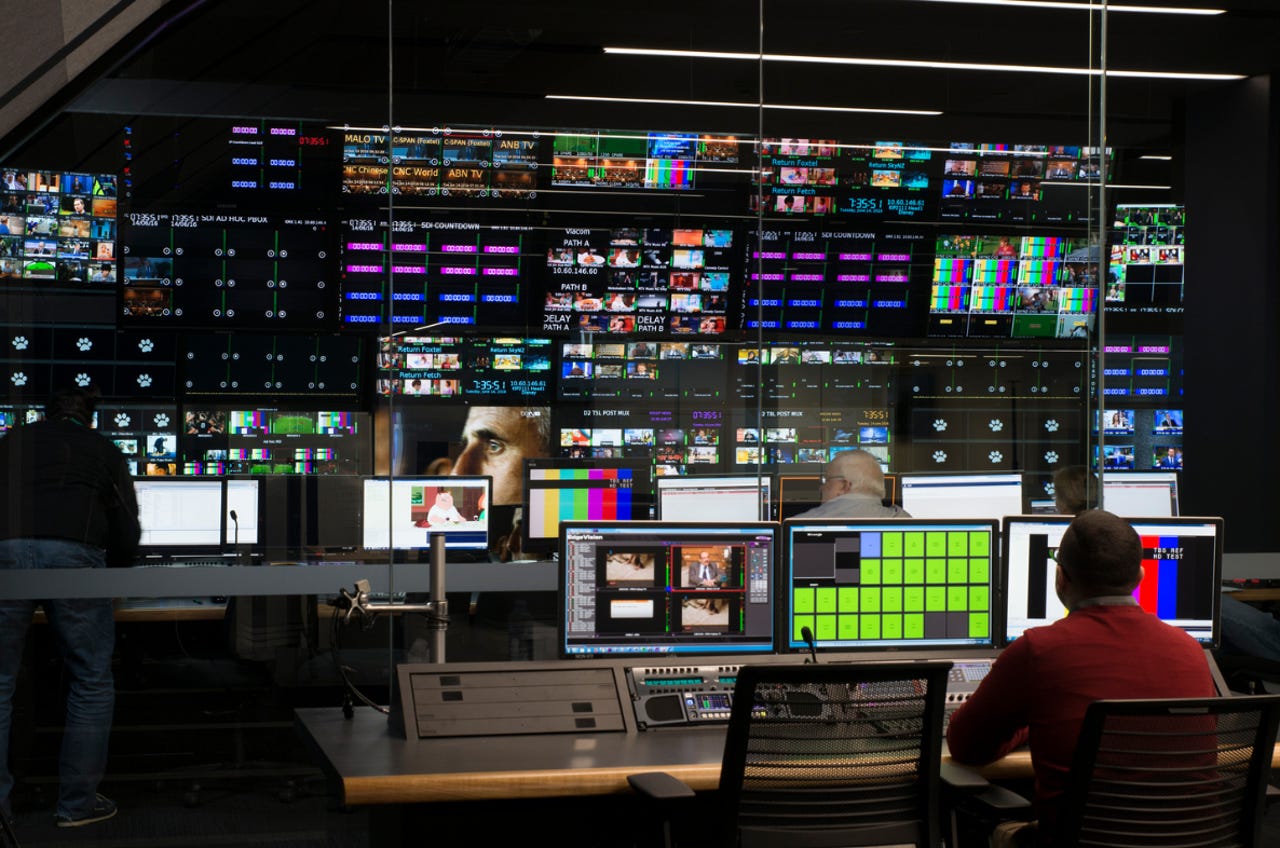Telstra showcases its new Broadcast Operations Centre


The BOC's MCR
Telstra's new Broadcast Operations Centre (BOC) is now fully operational, with the telecommunications carrier branching out to provide broadcasters with content transfer solutions via its fibre, satellite, and internet protocol (IP) networks.
The BOC has been functional since June, managing over 400 video, audio, and data services as part of the Telstra Broadcast Services (TBS) business.
"The services that we're delivering as Telstra Broadcast -- and certainly we are very, very strong in the operational technology -- we're working very closely with broadcasters around delivery of content, and one of our flagship offerings is our digital video network," Trevor Boal, head of Telstra Broadcast Services, told media on Thursday morning.
"Most of the broadcasters and content owners in Australia are our customers. There's a very vast and expanding network connecting studios, production facilities, and increasingly now venues, so for example taking sporting content, or stadium content, back to production facilities, studio facilities, for broadcast."
The BOC, described as the "hub for Telstra's global media network", has connections with Telstra's digital video network; the Sydney Customer Insight Centre; teleports in Oxford Falls, Sydney, and Gnangara, Perth; the Stanley teleport and master control room (MCR) in Hong Kong; and MCRs in London, Los Angeles, and New York thanks to its partnership with Pacific Television.
Latest Australian news
"We have about 400 permanent services running through this operation and delivering content to multiple takers, both inside Australia and outside Australia. We do about 20,000 ad-hoc events every year through this facility," said Paul Suters, head of engineering and operations for TBS.
"We have built the facility very much on a hybrid model. So it's designed in terms of new technology that's built around an IP infrastructure, very much core IP infrastructure. The broadcast industry's not quite completely in the IP space yet, so we have a hybrid where we can come in and out of the facility in baseband, or compressed format, or in IP. And then we sit on a normal, common, off-the-shelf-type enterprise standard IP equipment. But we have definitely given ourselves the ability to migrate services and migrate with the broadcasters -- so we operate in the traditional broadcasting environment, but we also have probably one of the most advanced IP facilities in the world at this point in time."
The BOC's MCR monitors services, delivers connections to global teleports, and provides engineering support and services for customers, while the central apparatus room houses technical equipment, Telstra explained.
The media-specific tier 4 datacentre incorporates main and redundant IP switches; aggregation switches in every rack bank; an edge adaptation solution comprising baseband, ASI, and IP inputs and outputs, routing, and processing; network monitoring; satellite integration for booking and scheduling systems; and a customer management tool set.
Suters added that the centre has disaster recovery systems, with highly redundant paths through satellite facilities.
Both Boal and Suters said Telstra built the BOC with the future in mind, provisioning for higher-bandwidth services and newer video technologies.
"We've built the facility with the advanced resolutions and formats in mind. And part of our architectural design allows much higher bandwidth," said Suters, confirming that it is 8K ready.
"Of course you can't talk about broadcast without talking about digital and OTT; and particularly that is a very key focus for us moving forward," Boal added.
"We're working with a number of customers around how they take their content into an online format, but then also how do they monetise their offerings in the marketplace."
Boal also signalled Telstra's intent to continue expanding the TBS business globally.
"Global aspirations are key to our future growth," he explained.
"And we are already quite a substantial player in delivery of content in and out of Australia that we do have a focus, and we will continue to invest more in, our global ambitions around delivering content in and out of Asia, from Europe, the UK, and also North America. We work closely with a couple of existing partners already in different parts of the world, and we continue to invest in those partnerships."
According to Boal, one of the major drawcards for customers to use Telstra's broadcast-transferring system is that it owns a large fibre network across the APAC region.
"In particular, owning the fibre assets [is] a very strong differentiator for a provider in that market to be able to transport that content cost effectively and efficiently for broadcasters and sporting rights holders," Boal explained.
Telstra also has a media studio at its Sydney headquarters that Boal said could be leveraged in future.